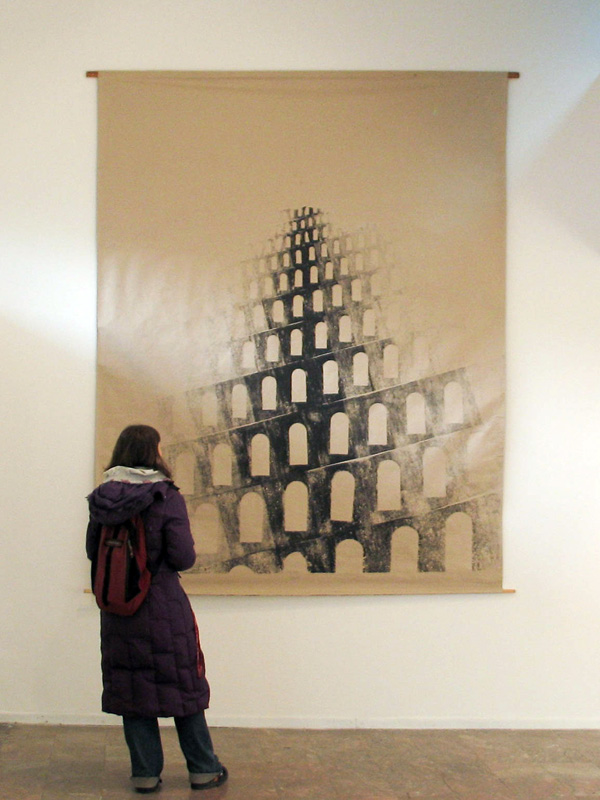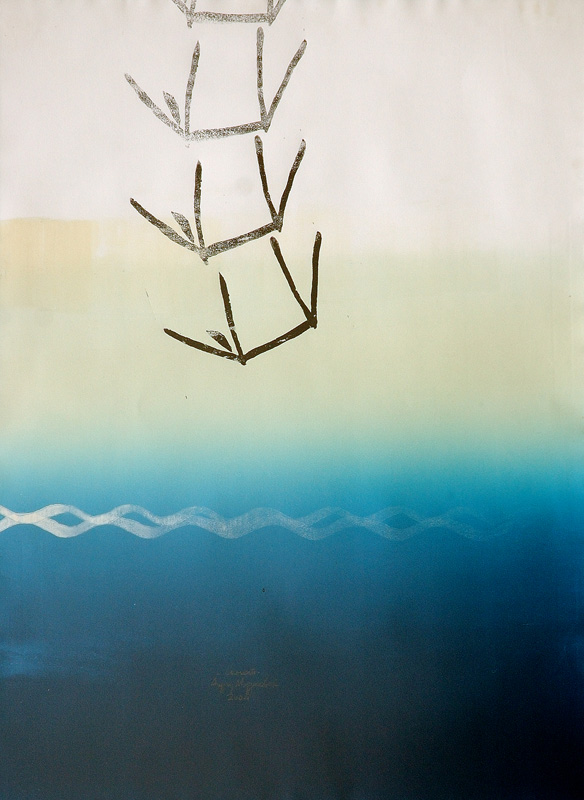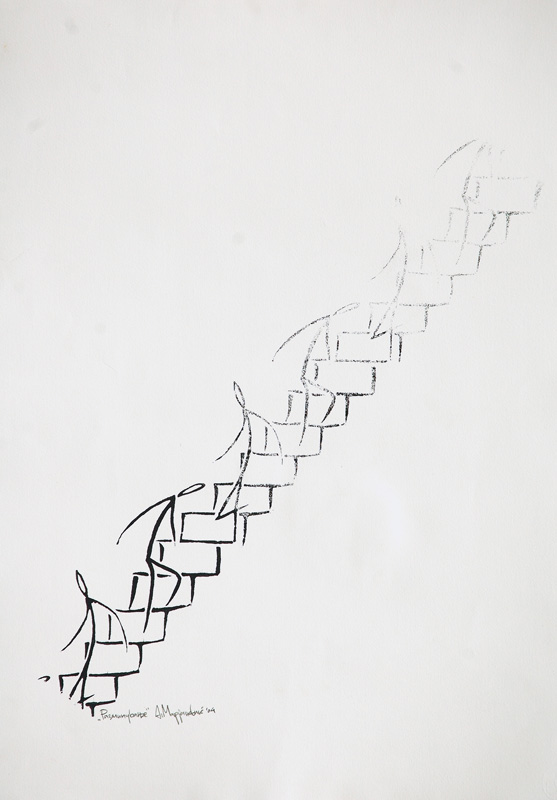Recurrences
Cylindrical prints 2004-2007
Foreword from the exhibition catalogue written by Jasmina Ilievska Marjanovic
Where do we see recurrences in our lives? It seems like the first heart beat triggers an infinite inter-weaving of rhythms, schemes, patterns, sequences, cycles which are happening always in a repetitive, recursive dynamics. They are never quite identical, every new repetition has its own characteristics and differences, but the same shape is always there in the background appearing in a cyclic pattern of recursions. Let’s see: heart beat (pulse), rhythm in music and poetry, waves in the sea, symmetry of the left and right half of our body and of all things in nature, repetitions of genes throughout generations, repetition of the same electrons in the molecules of all material things, recurring decimals and geometric progression in mathematics, repetition of the seasons in nature, repetitive spinning of all planets and celestial objects in the Solar System, cyclical course of the history of civilizations and cultures, repetition of products in manufacturing and capitalist production, symmetries used in construction and architecture, repetition of satisfying everyday bodily needs, recurrent everyday social and cultural obligations of an individual, recurrences in languages (natural and cultural), repetition in the computer technologies, repetitio as mater studiorum, as a way of socio-cultural training, repetitions in mental judgment, similarities in religions, psycho-mental patterns of behaviour people are entrapped in … and so on and so on. Don’t you ever feel like every new face is only a repetition of the previous one (your own or a universal, archetypical one?), that every new place you visit is only a repetition of the previous one or that every new event in your life is a déjà-vu … and so on in an infinite sequence. Mostly we can not differentiate what happened before or after, but we can’t escape the feeling that something is repeating in our conscience – as when we are dreaming that we are dreaming … It feels like we are faced with some internal law of natural and social life which has universal application and maybe a higher meaning.
In visual arts, printmaking is based exactly on this universal law of repetition, the repetitiveness of a work of art is the differentia specifica of its technique (producing an infinite number of the same, yet never identical prints). The first time Andrej Marjanovic noticed this link between his art technique and the nature of things in general was his graduation exhibition in 2004, also titled Recurrences. Then he dared for the first time to introduce a novelty in the technical instrumentarium of printmaking by using polyethylene plumbing pipes instead of flat printmaking plates as a formal expression of the idea of cyclical repetition, but also as paying respects to the eldest printmaking techniques in the history of mankind (the Assyrian and Egyptian cylindrical stamp seals).
Today, in his first solo exhibition, 3 years after his graduation exhibition, he returns to the same theme in an attempt to reach deeper into the subject and to make a more thorough and systematic research of the technical possibilities of this new medium. If the individual themes in the 2004 exhibition were inspired by the mere technical repeating possibilities of the engraved pipes and were not closely linked to each other (except by involving repetition as an internal principle: Passing by, The Jump, Phalanx, Panic, Broken telephone, Tower of Babel – some are also exhibited here as a reminder), in the prints from 2007, however, the themes grow into a single thematic whole: depicting repetition as a universal principle of life (The Town, Nature, Haptata-Dzhtata, Tetris, Dreaming (that I’m Dreaming), Tree/Seasons). Certain visual elements (clouds/smoke, tree) also reoccur in the prints which are linked in a cycle, thereby formally inter-connecting the pieces among each other.
Furthermore, if the style and expression in the 2004 prints are completely abstract, minimalist and symbolical (people are deduced to basic-line figures, the use of form and expressive means is minimal) in order to turn the focus of attention mostly toward the possibilities and the abstract meaning of repetition in printmaking as an art technique and as a primary interest (the author shows autorefferentiality toward his art technique at the end of his graduate studies), then in the 2007 prints the author opens up toward the other pole of his idea, the content and embraces the entire range and weight of the idea’s semantic side which touches upon all areas of human life, in nature and culture.
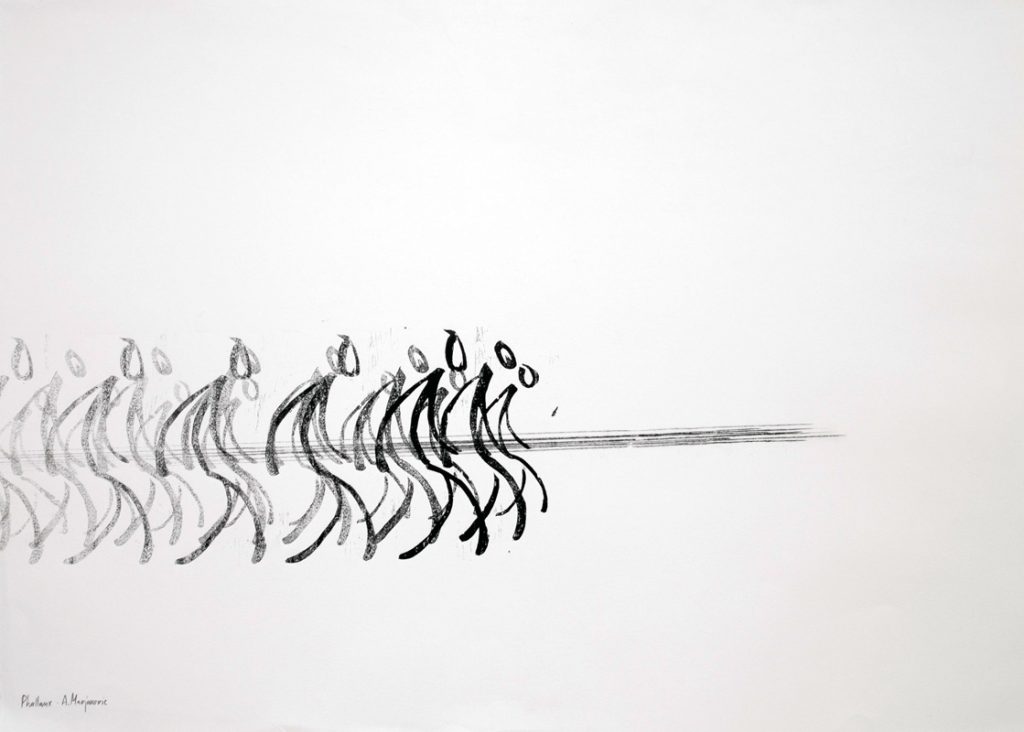
Phallanx
96 x 68.5 cm
2004
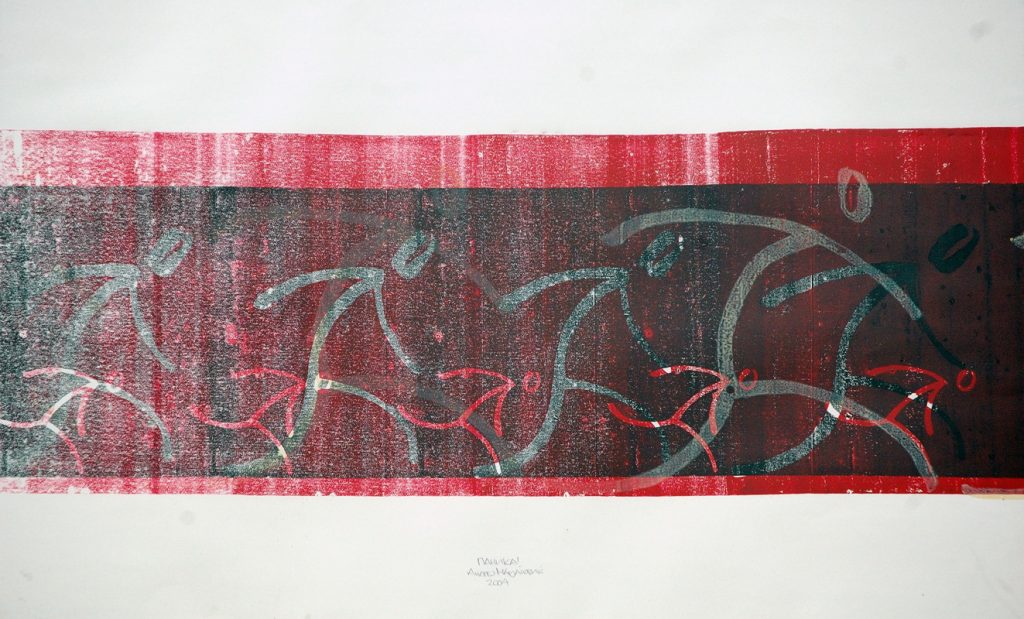
Panic
100 x 70 cm
2004
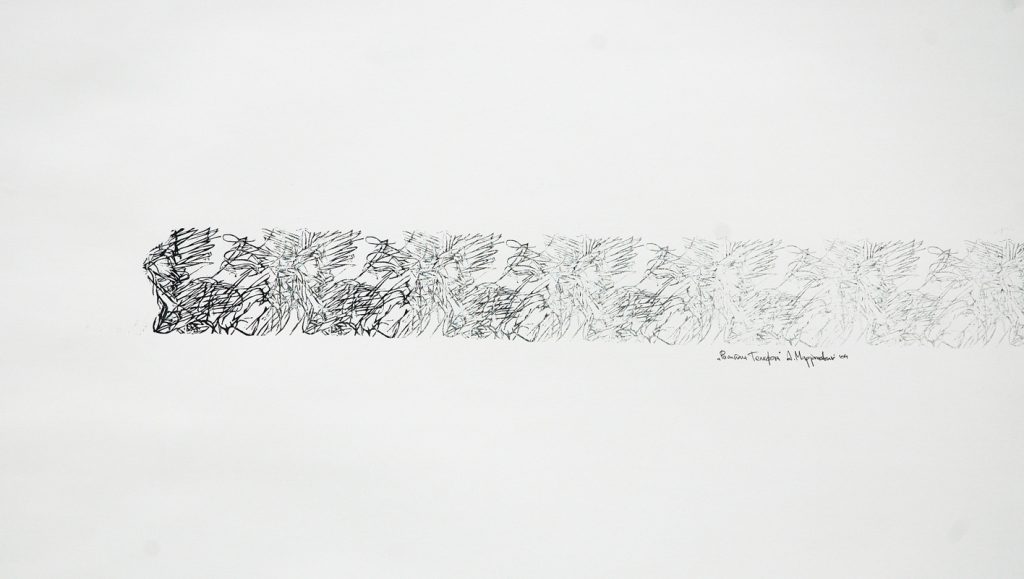
Broken telephone
76.2 x 56 cm
2004
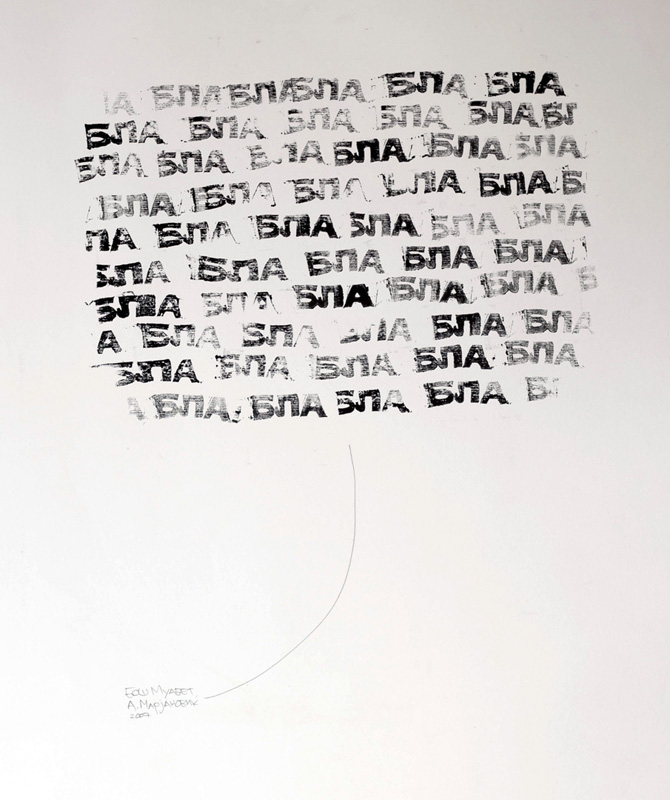
Small talk
49.5 x 72 cm
2007
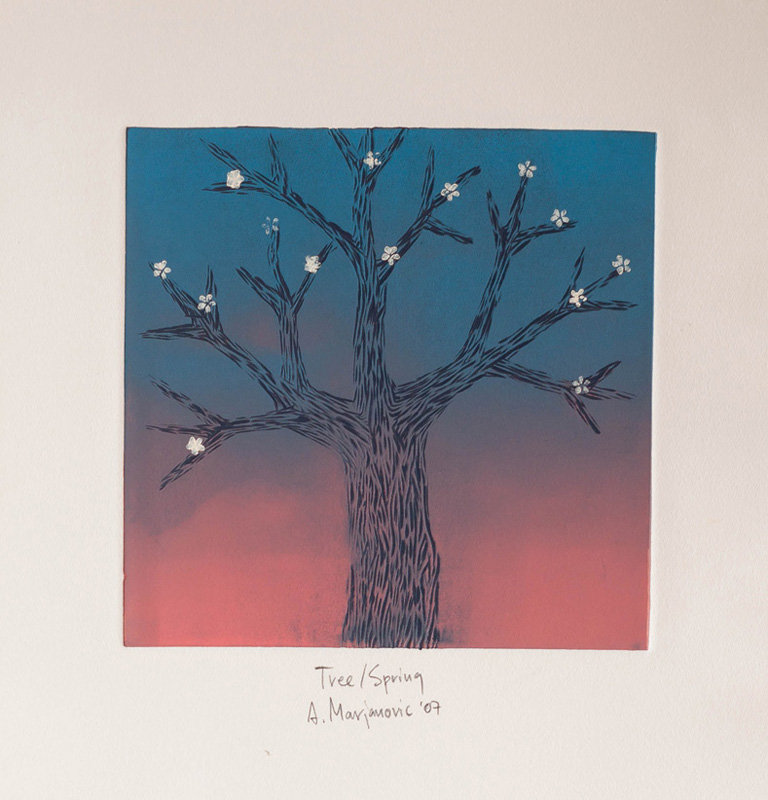
Tree (Spring)
39 x 57 cm
2007
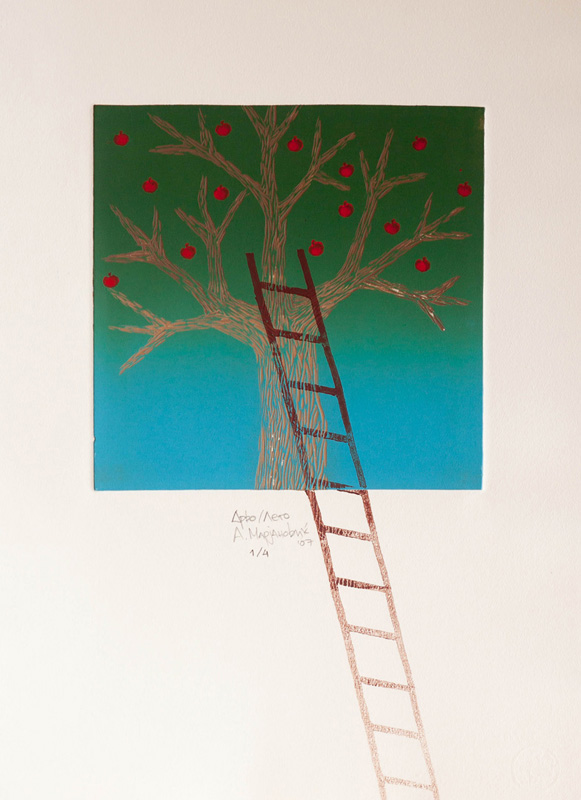
Tree (Summer)
39 x 57 cm
2007
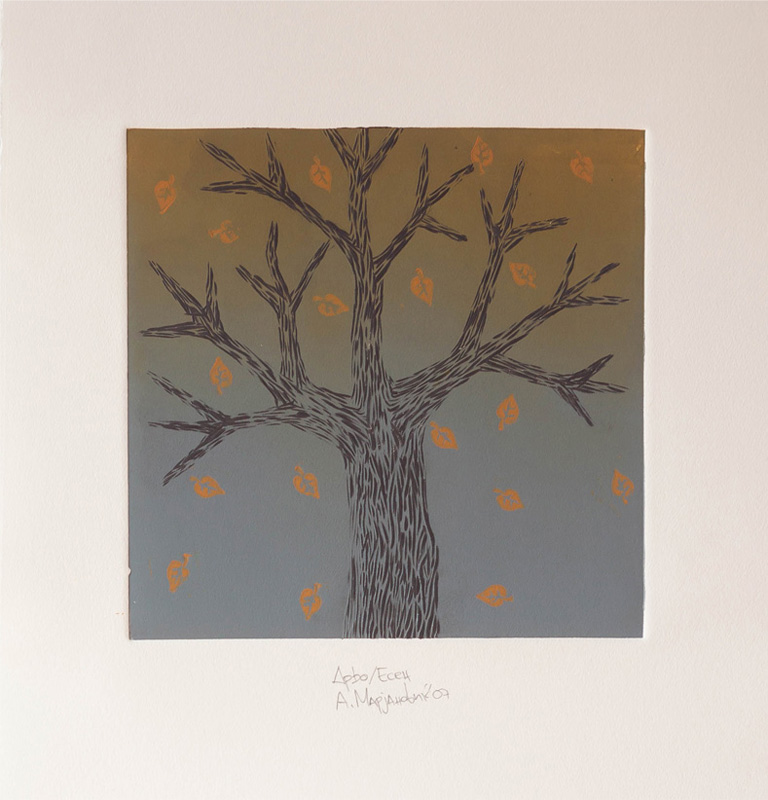
Tree (Autumn)
39 x 57 cm
2007
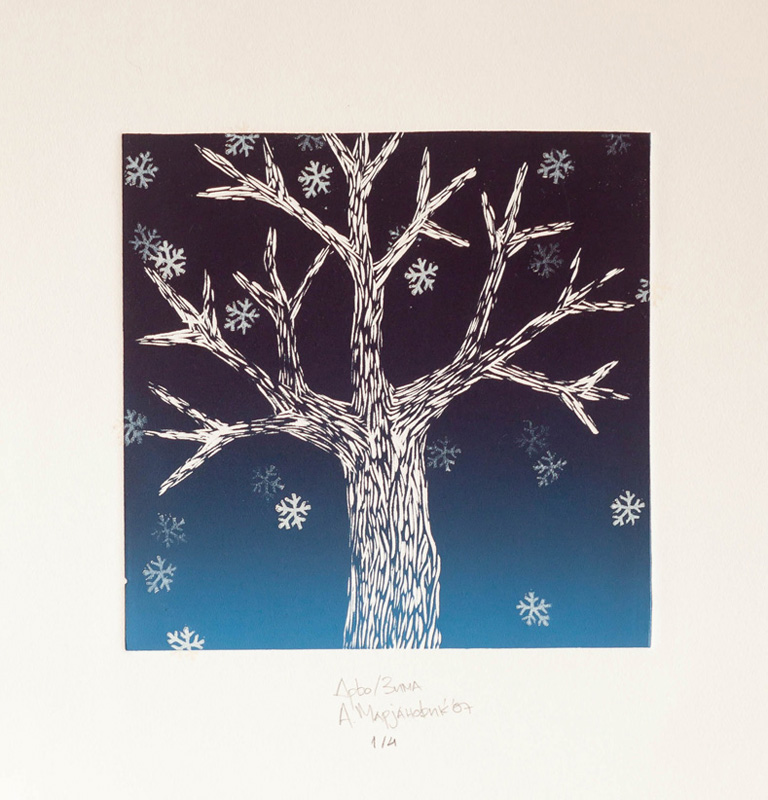
Tree (Winter)
39 x 57 cm
2007

Nature
81 x 121 cm
2007
The semantic side in the later case also opens up toward some characteristics of the author’s style which have not been able to brake through before: humour and ludic-critical attitude toward the contemporary time fluently blended with deep, penetrative power of thought, as well as a tendency for intermediality in the expressive means (achieving the effect of sound by graphic representation of verbal elements, affiliation to comic art and film). And still, there is enough room for the exquisite taste and the minimalist, abstract and symbolic tendencies in some new prints (Dreaming (that I’m dreaming),Tetris, ) or in certain elements of these prints (like the sun and moon in The Town and Nature or the use of colour, rain, apples, leaves and snowflakes in Tree/Seasons), just as there is enough room for autoreferential exploration of the possibilities of the medium in representing complex compositions with abundance of forms and events (in The Town and Nature) which successfully achieve vivid expressiveness, but also manage to depict entire actions, sequences of events in a story, almost like narration in film. If we are looking for things that are in common in both cycles of this author, however, we should mention the tendency of interweaving the formal and semantic aspects of his works and the geat need to experiment (with the technique, the medium, the matrix, the foundation, the colours, the expressive means in general and with themes likewise).
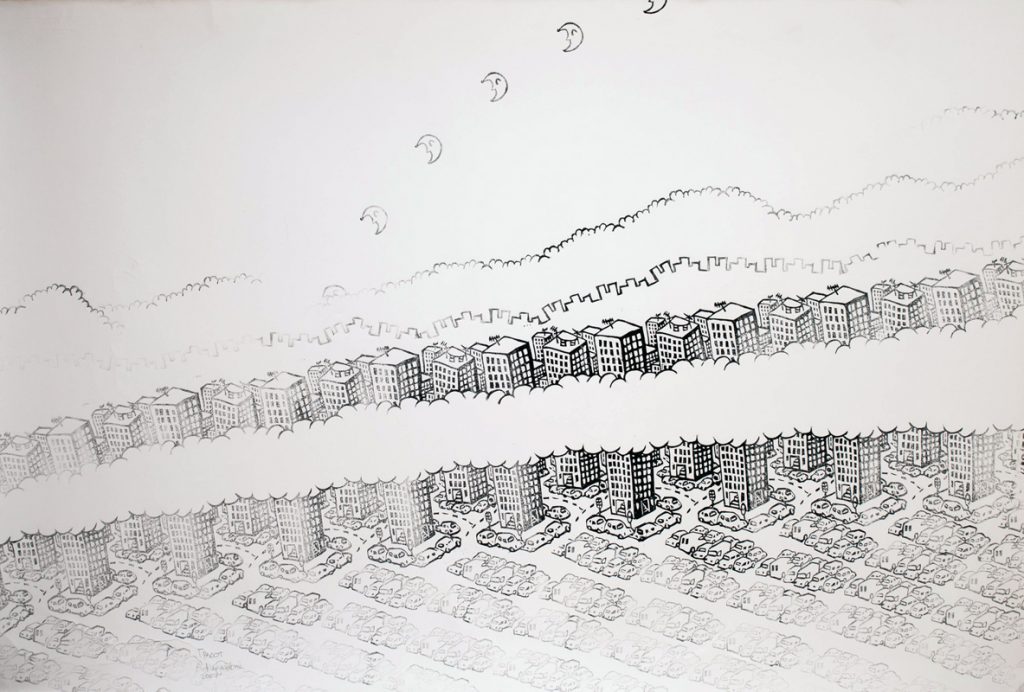
The city
121 x 81 cm
2007
